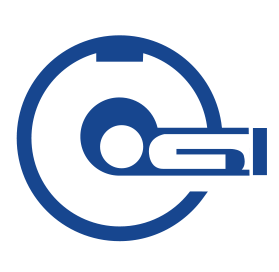
When cancer is suspected, rapid and definitive diagnosis i s of great importance to enable treatment to begin p romptly. The NCS introduced a pathway to ensure that patients, who are referred to a specialist with a suspicion o f cancer, are diagnosed within 14 days of referral. During t he two-week timeframe, it is expected that patients will undergo a combination of pathology, imaging and p hysical examination to achieve a diagnosis, which can th en be discussed and approved at an MDT meeting.
Over the past five years, this pathway has developed significantly, with 73% of patients being seen at a specialist clinic within 48-hours of being seen at PHCC.Moving forward, rapid diagnosis and movement along the care pathway must be supported by prompt referrals.
Investment in advanced imaging systems has improved diagnoses, allowing clinicians to plan precise radiation th erapies that target cancer cells but avoid healthy cells, as well as monitor the response to treatment. Moreover, all diagnostic images can be viewed across HMC, PHCC and other connected sites.
In the next six years, greater focus should be placed on streamlining the patient experience while travelling a long the Patient Pathway. As a first step in recognition of this, a one-stop breast cancer diagnostic clinic has been developed at the NCCCR. This clinic aligns with international best practice in the management of breast cancer diagnosis and affords patients the ability to receive mammography, ultrasound, core biopsy and clinical examination during a single visit. Over the next six years where appropriate, site-specific diagnostic clinics will be developed with capacity to support advances in genetic
testing. There are both advantages and disadvantages to centralization of services, therefore the principle of localize where possible, centralize where necessary’, should be t aken into consideration for service development and p lanning.
Continue To Monitor AndImprove Diagnostic PathwaysReporting of performance against the 14-day pathway willcontinue. It is however important to acknowledge that thehealthcare system is currently experiencing a significantincrease in volume of patients entering the system. Forexample, between 2014 and 2016, the number of patientsreferred through this route increased by 45%.The demands placed on diagnostic services such as pathology
and imaging to continue meeting these targets is well recognized.
The implementation of Electronic Medical Records (EMR) systems across public providers has improved the ability to exchange data across the system. However, recruitment of specialist pathology and imaging personnel has not kept pace with the increasing volume of patients. This s hould be prioritized to ensure continued development of the Patient Pathway and the adoption of new precision diagnostic techniques. The ongoing development of precision medicine at HMC will ensure the comprehensive development of molecular pathology and sequencing,
deep sequencing and rapid precision diagnostics for all cancer patients. Facilitating routine diagnostic testing outside of the acute hospital environment into primary care would also help reduce burden. Providing specialist ca ncer training (Domain 10) in primary care to include tr aining primary care physicians in procedures such as colonoscopy, ultrasound and radiology would support the diagnostic pathway.
A program of communication skills training has been ongoing and a number of HMC physicians are now certified trainers, who can deliver training to peers as part of ongoing development programs. Over the next six years, this training will continue and influence more physicians to strive to become additional certified trainers. Consistent feedback from patients, trainers and trainees s hould also be used to regularly review and develop the training program to improve patient experience.
All information provided to the patient should be bi-lingual and developed in consultation with patients who have experienced cancer care in Qatar to help ensure clarity. This information should be consistent across all levels of the health system to ensure standardization of information. In future, the development of communication s kills programs coupled with improved patient information will help ensure that patients are empowered to make informed decisions regarding their ongoing treatment in collaboration with their physician. Health literacy in Qatar may be relatively low at present and this will be considered as the program evolves. Tools to support shared decisionmaking will be developed.
Three key performance indicators were developed in consultation with healthcare professionals and the wider public, for patients with suspected cancer. The indicators are monitored and reported on a quarterly basis to the Health Service Provider Agreements (HSPAs) team at MOPH, who report on KPIs across the health system. The listed three key performance targets are among the most am bitious worldwide:
Program Activities:
Diagnosis Pathway
| Lead
|
- Evaluate and continue monitoring provider rapid patient access performance - 3 access KPIs
| MOPH
|
- Prioritize recruitment of specialist pathology and imaging personnel as per agreed HMC workforce plans
| HMC
|
- Support the training of primary care physicians in routine diagnostic procedures
| PHCC
|
- Continue to develop communication skills training program using patient experience feedback
| HMC
|
- Continue development and access to patient information and shared decesion making tools
| HMC
|